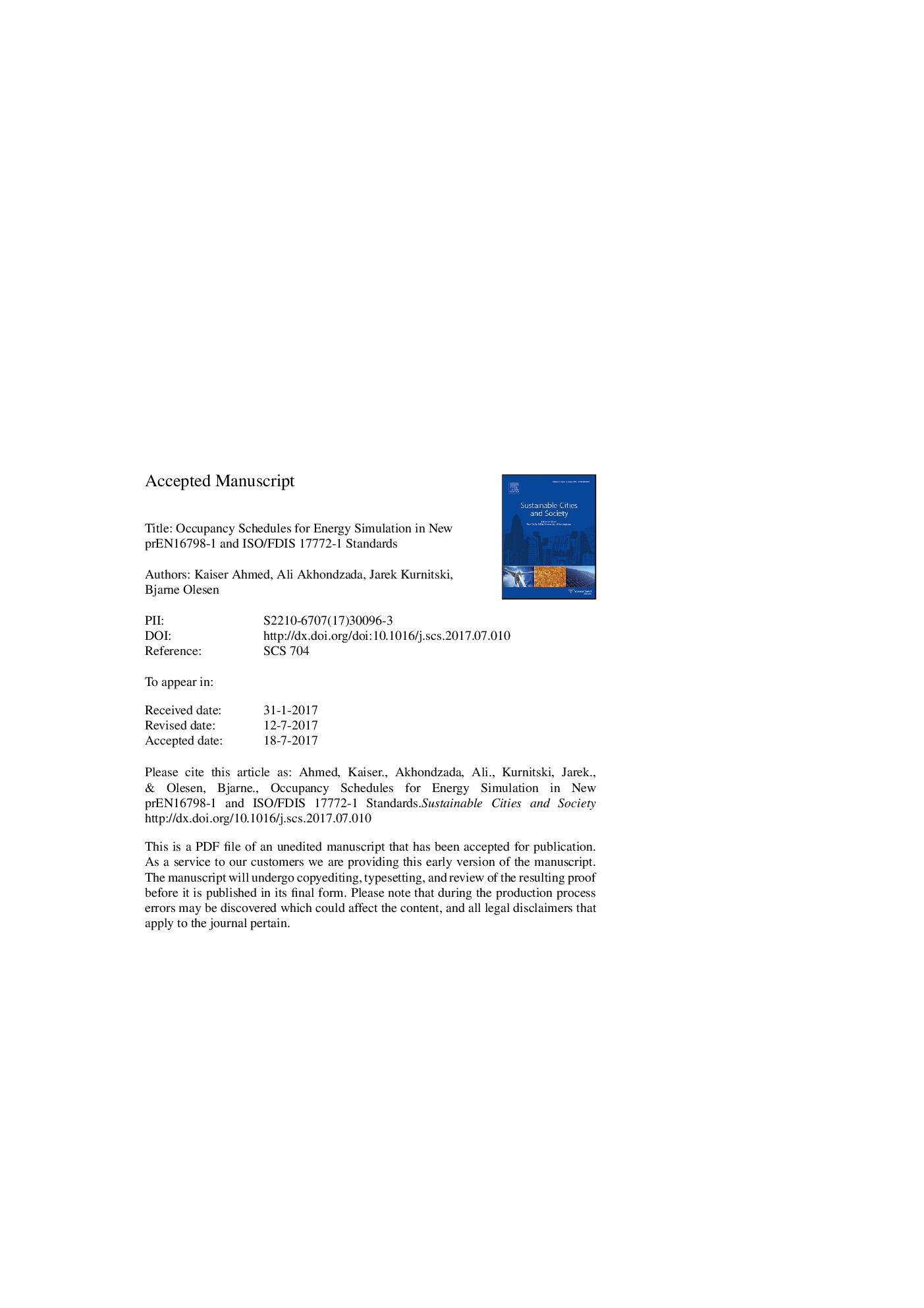| Article ID | Journal | Published Year | Pages | File Type |
|---|---|---|---|---|
| 4928084 | Sustainable Cities and Society | 2017 | 34 Pages |
Abstract
This study reports the development of occupancy, lighting and appliance hourly schedules for new energy calculation input data standards. Developed schedules apply for 10 building categories which are described by one to three space categories, and include the separation between weekdays and weekends if needed. The approach used allowed to keep the full set of schedules compact and easy to implement in building energy simulation tools. The average values cab be used in monthly calculation tools. Occupant density values have local nature and occupancy patterns also depend on culture. The structure of the schedules, i.e. the way how the occupancy patterns are described, may be seen as an original result and its application has no geographical limitations. The main focus of the study was in the occupancy heat emission modeling and schedule development for prEN16798-1 and ISO/FDIS 17772-1 standards, supported by appliances and lighting schedules which are similarly needed as energy calculation input data. Hourly schedules allow to model occupant behaviour effects, for instance the peak cooling load in an office room was increased by factor of 1.1-1.3 compared to the use of constant average value. Single office schedule increased the delivered cooling energy by 8% compared to an open plan office schedule. The findings emphasize the importance of realistic schedules for specific categories of buildings.
Related Topics
Physical Sciences and Engineering
Energy
Renewable Energy, Sustainability and the Environment
Authors
Kaiser Ahmed, Ali Akhondzada, Jarek Kurnitski, Bjarne Olesen,
